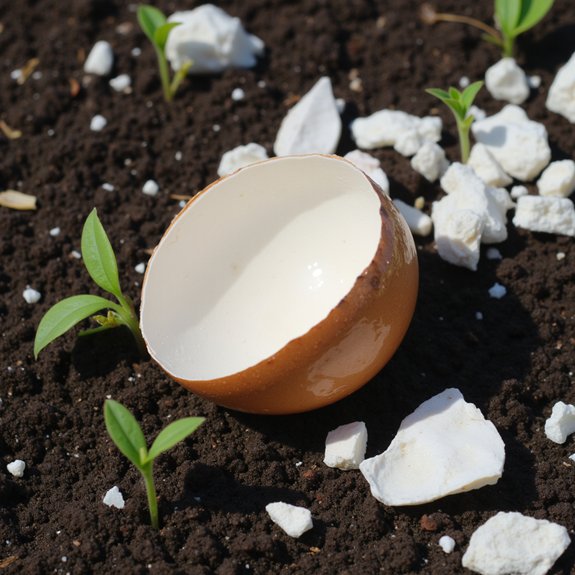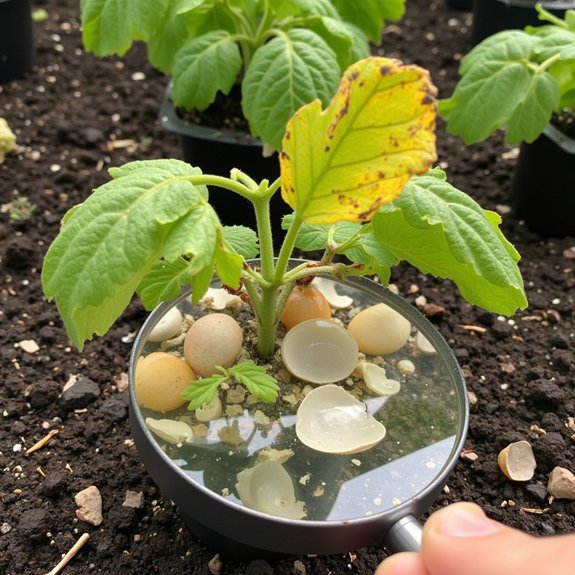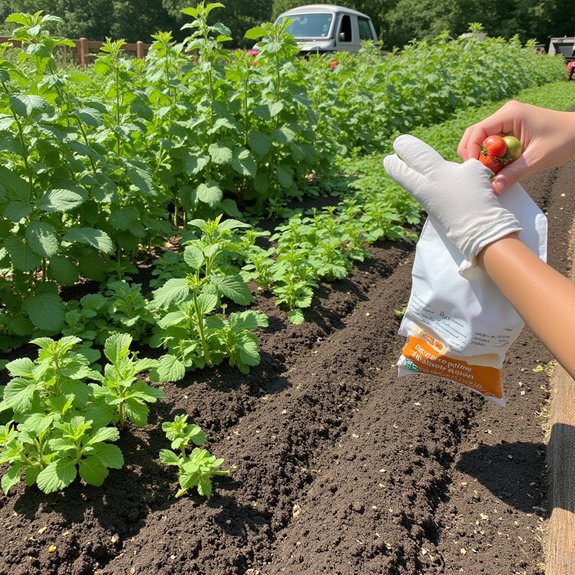Gardeners worldwide crush eggshells into their soil, believing these kitchen scraps deliver miraculous plant benefits. Yet the calcium carbonate in eggshells remains largely unavailable to plants, requiring acidic soil conditions and months of decomposition to release nutrients. Whole shells can persist in gardens for two to three years without breaking down markedly. The gap between popular gardening folklore and scientific evidence reveals surprising truths about what actually helps plants thrive.
Contents
The Science Behind Eggshells in Garden Applications

While eggshells have gained popularity among gardeners as a natural soil amendment, the scientific evidence supporting their effectiveness remains surprisingly limited. Research shows eggshells contain approximately 34% calcium carbonate, along with trace minerals like magnesium and phosphorus. However, eggshell decomposition occurs extremely slowly in garden conditions, often taking months or even years to break down completely.
The calcium release from whole eggshells is minimal and poorly timed for plant needs. Ground eggshells perform better as a soil amendment, but their bioavailability remains questionable compared to commercial lime or gypsum applications.
Nutritional Value and Calcium Content for Plant Health
The calcium content in eggshells creates an interesting paradox for gardeners seeking natural plant nutrition. While eggshells contain 34% calcium, their bioavailability remains surprisingly low for immediate plant use. This slow nutrient absorption means plants can’t quickly access the mineral content, unlike commercial calcium sources that dissolve readily in soil.
The breakdown process takes months, sometimes years, before calcium becomes plant-available. Most garden soils already contain adequate calcium levels for healthy plant growth. Testing soil before adding any calcium sources prevents nutrient imbalances that could actually harm plants rather than help them thrive naturally.
Debunking Common Eggshell Gardening Claims

Popular gardening folklore often credits eggshells with miraculous plant-boosting powers, but scientific evidence tells a different story. Many gardeners believe eggshells create spectacular blooms, yet roses need balanced N-P-K ratios, not just calcium. The supposed eggshell benefits for pest control lack merit, as slugs easily cross crushed shell barriers.
These gardening misconceptions persist despite eggshells’ slow decomposition rate and minimal nutrient release. Intact shells can take years to break down, providing little immediate plant benefit. While eggshells contain 34% calcium, soil calcium deficiency rarely affects roses, making supplementation unnecessary in most gardens.
Eggshells as Natural Pest Control: Reality Check
Despite widespread claims about their pest-deterrent properties, eggshells fail to deliver meaningful protection against garden invaders. Slugs easily navigate crushed eggshell barriers, making this popular remedy largely ineffective. The sharp edges that supposedly deter pests simply don’t create sufficient obstacles for determined insects.
Some gardeners report success against Japanese beetles, but evidence remains purely anecdotal. Diatomaceous earth provides far more reliable pest resistance than scattered eggshells. However, eggshells can indirectly support pest control by attracting beneficial birds to gardens, where these natural predators consume harmful insects while foraging.
Evidence-Based Alternatives for Optimal Garden Care

Rather than relying on questionable remedies like eggshells, gardeners achieve better results with scientifically-backed approaches. Quality organic compost provides essential nutrients, improves drainage, and feeds beneficial soil microorganisms. Compost benefits include slow-release nitrogen, phosphorus, and potassium that roses actually need.
Balanced fertilizers with 10-10-10 or 12-12-12 ratios deliver immediate nutrition. Soil amendments like aged manure, bone meal, and kelp meal offer proven results within 4-6 weeks.
For pest control, beneficial insects, neem oil, and companion planting work effectively. Regular soil testing every 2-3 years identifies specific deficiencies, allowing targeted corrections rather than guesswork with kitchen scraps.
